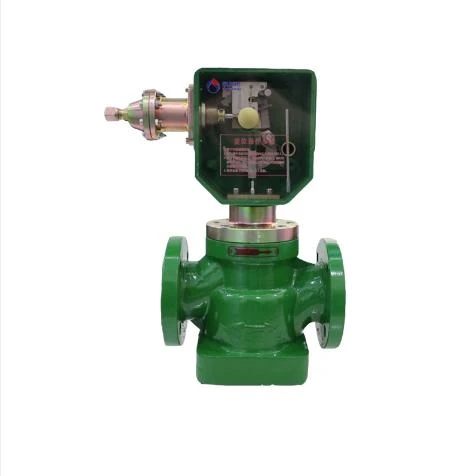
Dec . 11, 2024 12:10
Back to list
صمامات تخفيف الضغط
Pressure Relief Valves An Essential Component in Safety Systems
Pressure relief valves (PRVs) are critical safety devices in various industries, including manufacturing, oil and gas, and chemical processing. Their primary function is to protect equipment and systems from the dangers associated with overpressure situations. By automatically releasing excess pressure, PRVs ensure safe operation, prevent potential damage, and reduce the risk of catastrophic failures.
Understanding the Basics of Pressure Relief Valves
A pressure relief valve is typically installed in pressure vessels, pipelines, and other systems where excess pressure could accumulate. When the pressure within a system exceeds a predetermined threshold, the PRV opens to allow some of the pressure to escape, thus reducing the pressure within the system to safe levels. Once the pressure drops back within the acceptable range, the valve closes, sealing the system again.
There are several types of pressure relief valves, including spring-loaded valves, pilot-operated valves, and rupture disks, each designed for specific applications and pressure ranges. Spring-loaded valves are the most common type; they rely on a spring mechanism to hold a disc in place against the pressure. When the pressure rises beyond the spring's set point, the disc lifts, allowing the pressure to escape.
Importance of Proper Sizing and Selection
.
Furthermore, regular maintenance and testing of PRVs are crucial to ensure their reliability. Over time, components can wear out or become corroded, leading to malfunction. Periodic inspection and testing should be performed according to regulatory standards to confirm that the valves operate correctly and meet safety requirements.
صمامات تخفيف الضغط

Regulatory Compliance and Standards
Many industries are governed by strict regulations regarding the use of pressure relief valves. For instance, in the oil and gas sector, authorities such as the American Society of Mechanical Engineers (ASME) and the Occupational Safety and Health Administration (OSHA) set guidelines for PRV design, installation, and maintenance. Compliance with these standards helps ensure the safety of workers and the environment while minimizing potential liabilities for companies.
Challenges and Innovations
The field of pressure relief valves is continually evolving to meet the demands of modern industries. One of the significant challenges is addressing the increasing pressure demands of newer technologies. As systems become more complex and operate under higher pressures, conventional PRVs may not be adequate.
Innovations such as electronic pressure relief systems and advanced sensors are being developed to enhance the functionality and responsiveness of PRVs. These systems can provide real-time monitoring and automatic adjustments, significantly improving safety and efficiency. The integration of smart technology allows for predictive maintenance, which can identify potential failures before they lead to problems.
Conclusion
In conclusion, pressure relief valves are indispensable components in ensuring the safe operation of various industrial systems. Their ability to prevent overpressure situations safeguards equipment, protects personnel, and minimizes environmental risks. However, the effective management of these valves requires careful selection, regular maintenance, and adherence to regulatory standards.
As industries continue to evolve, the development of new technologies and solutions will play a critical role in enhancing the performance and reliability of pressure relief valves. By prioritizing safety and innovation, manufacturers can better protect their operations and contribute to a safer industrial environment. The ongoing advancements in this field promise not only to improve safety but also to support the sustainable growth of industries worldwide.
Next:
Latest news
-
Safety Valve Spring-Loaded Design Overpressure ProtectionNewsJul.25,2025
-
Precision Voltage Regulator AC5 Accuracy Grade PerformanceNewsJul.25,2025
-
Natural Gas Pressure Regulating Skid Industrial Pipeline ApplicationsNewsJul.25,2025
-
Natural Gas Filter Stainless Steel Mesh Element DesignNewsJul.25,2025
-
Gas Pressure Regulator Valve Direct-Acting Spring-Loaded DesignNewsJul.25,2025
-
Decompression Equipment Multi-Stage Heat Exchange System DesignNewsJul.25,2025

